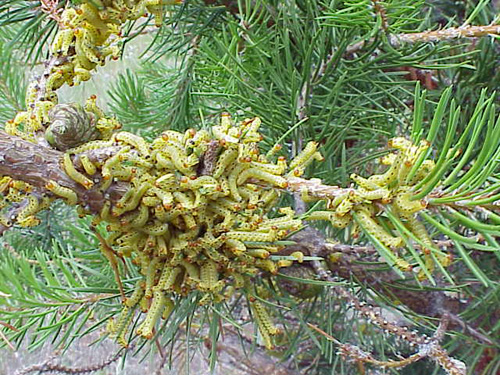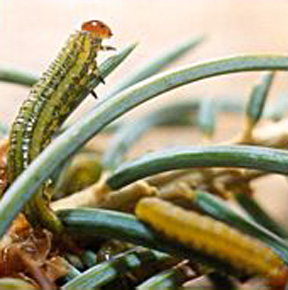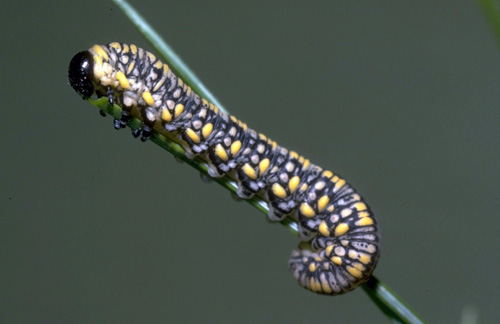Time to watch for sawflies on conifers
Defoliation and browning of conifer foliage in the early summer may be the first signs of a sawfly infestation.
Larvae of several sawfly species feed in late June through late July. Keep an eye out for the following sawflies on your conifers.
- Yellow-headed spruce sawfly on young, open-grown white spruce.
- Larch sawfly on larch (tamarack) trees.
- Redheaded pine sawfly on red, Scotch and jack pine.
- Balsam fir sawfly on balsam and Fraser fir.
- Introduced pine sawfly primarily on white pine, but also on Scotch and red and Austrian pine.

Redheaded spruce sawfly larvae on Scotch pine.

Yellow-headed spruce sawfly larva.

Introduced pine sawfly larva. Photo credit: USDA Forest Serv., Region 8, Bugwood.org.
Sawfly larvae are often mistaken for caterpillars, but are actually a primitive group of insects related to wasps and bees. The larvae usually feed in colonies of 10 to 50 individuals and typically eat all of the needles or leaves from a single branch. The adult is a brownish or black, fly-like, non-stinging wasp. When populations are high, these summer feeding sawflies can cause serious defoliation because they eat both new and old foliage.
If sawflies are in small numbers, you can usually clip out the colony and mash or otherwise destroy the larvae. Insecticides will also kill these larvae, but be careful and only use these products if it is truly necessary to protect the tree since most sawfly populations are controlled by parasitoid wasps, and the wasps will be very susceptible to any insecticide that you use. Note that Btk (Dipel), a product often used to control leaf-feeding caterpillars, is not effective on the sawfly larvae.



 Print
Print Email
Email

